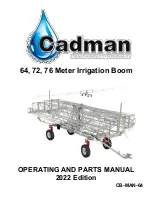
Water contains more or fewer dissolved particles, for example minerals which can be measured in PPM-particles
per million as a TDS conductance (Total Dissolved Solids). Example: Aachen tap water 160 ppm, Munich 246
ppm, Berlin Kreuzberg 375 ppm, Würzburg 820 ppm. The TDS limit of the drinking water ordinance in Germany
lies at 1785 ppm. Very different to central Europe, where the average values of 500 ppm prevail, is in the
countries that produce water ionizers, Korea and Japan, where the average values are under 100 ppm. There
the following applies:
o
Soft water:
up to 17 ppm
o
Slightly hard water:
17,1 – 60 ppm
o
Medium hard water:
60,1 – 120 ppm
o
Hard water:
120,1 – 180 ppm
o
Very hard water:
Over 180 ppm
The more dissolved particles a water ionizer has to treat, the more efficient and powerful it has to be. Since all
water ionizers from the Far East are designed for relatively mineral poor water, must the manufacturers’
instructions be viewed in relation to the reachable pH values, ORP and water contents (these are the
parameters of activated water). Figuratively speaking, a water ionizer in Central Europe has to mostly be on full
power. This means especially with mineral rich tap water:
➢
Use a preferably slow water flow
➢
As a rule, set to the highest level
With the Aquavolta
®
Water Tractor, the most powerful flow-through ionizer on the global market, can water with up
to 750 ppm be ionized and a good pH value of 9 to 9,5 of alkaline activated water can be reached. Already with a
pH value of 10,7 does an ORP result with up to - 735 mV (CSE) with a saturation of 1591 ppb (1,591 ppm -
respectively milligram/l) of dissolved hydrogen. (Example: Munich tap water. Can vary depending on water
source). For catholyte water are super saturated results achieved with a pH value of 11,8.
9 - What role does the water composition play?
Содержание Water Tractor
Страница 40: ......










































